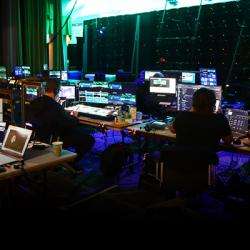14 Tips to Help Presenters Connect with Your Audience

We’ve all been there … seated in the audience, listening to a speaker and wondering how the speaker arrived on-stage so unprepared.
For meeting planners, this can be your worst nightmare. You may have planned an otherwise flawless event, but that will go virtually unnoticed, with attendees instead remembering the poor performance of the presenter.
Speaker Management: More Than Just Logistics
Successful meeting and event planners know that the key to effective speaker management goes far beyond making sure all logistical details are buttoned up.
When working with professional speakers, this typically involves working with the speaker to ensure he or she understands your audience and goals so the presentation can be tailored appropriately. When working with executives or non-professional speakers, planners often need to go even further and provide some basic guidelines about how to best prepare for a presentation.
Preparation is Key
A prepared, engaging speaker can be the difference between a memorable or disastrous event for your attendees. The best meeting planners don’t leave anything to chance.
Here are 14 tips to help prepare your speakers to best deliver their message and really connect with your audience:
Structuring Content and Preparing Slides
- Research materials emphasizing “real-world’ significance to make the content relatable to the audience.
- Use larger fonts on slides – 24 point for body text and 36-40 point for headings/bullet points.
- Limit each slide to 6 or 7 points. Less is better!
- Use contrasting colors to maximize clarity.
- Observe a “safe zone” when building slides and leave enough white space.
Presenter Effectiveness
- You need to play the title role, and your slides the supporting role. Your slides should support what you are saying; you should not be reading exactly what is on your slides.
- Practice, practice, practice and learn techniques and methods to remove “uhhh” and “ummm” from your presentation vocabulary.
- Dress appropriately – ensure that your chosen attire for your presentation will be compatible with the audio visual equipment, and the stage design.
- Speak clearly projecting the voice in a clear and concise manner, and when using microphone remain 6-8 inches from the head of the microphone.
While On-Stage
- Make eye contact with your audience.
- Stay on-time and on-topic. Many presenters ask a trusted colleague to sit in the audience and provide signals for time, or to get things back on track.
- Utilize natural pauses in your script to increase the impact of key statements.
- If your presentation includes a Q&A, always repeat the question asked before answering.
- Don’t lose your focus if there are glitches or distractions. Allow your event team to handle any technical glitches and have a refocus technique that works for you to get things back on-track.
BONUS!
Download Preparing Your Speakers for Success: A Guide for Meeting and Event Planners to ensure your presenters don’t leave your audience confused.
Share This Article
Categories
Latest Posts

Philadelphia 2026: Is Your Venue Ready for the Spotlight?

Scalable AV Infrastructure for Life Science Enterprises

Extend Your Reach: The Power of Virtual and Hybrid Events

Why Every Detail Matters in Investor and Year-End Meetings

IMS Technology Services Welcomes John Beaulieu
Tags
Contact Us
- Headquarters: 3055 MCCANN FARM DRIVE, GARNET VALLEY, PA 19060
- Event Staging: 2000 COLUMBIA AVENUE, SUITE 300, LINWOOD, PA 19061
- Southeast Office: 404 SUNPORT LANE, SUITE 350, ORLANDO, FL 32809
- Phone: + 610-361-1870
- Contact Us
Services
Recent Posts

Philadelphia 2026: Is Your Venue Ready for the Spotlight?


